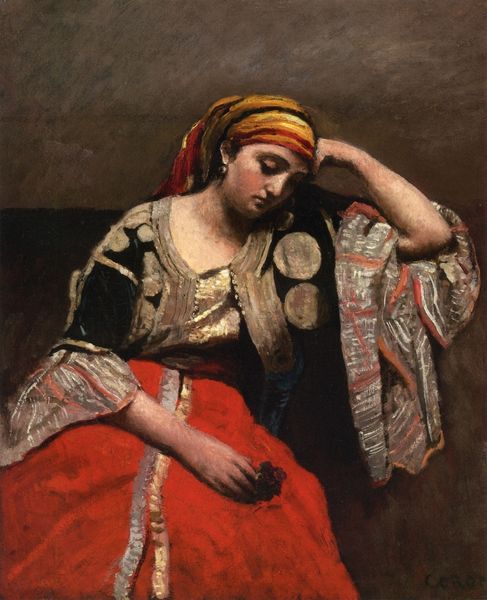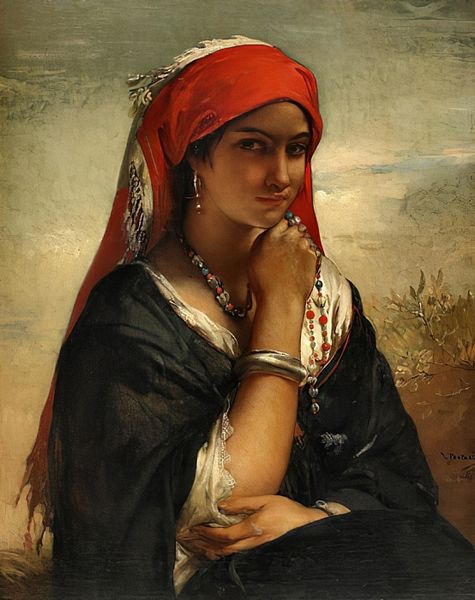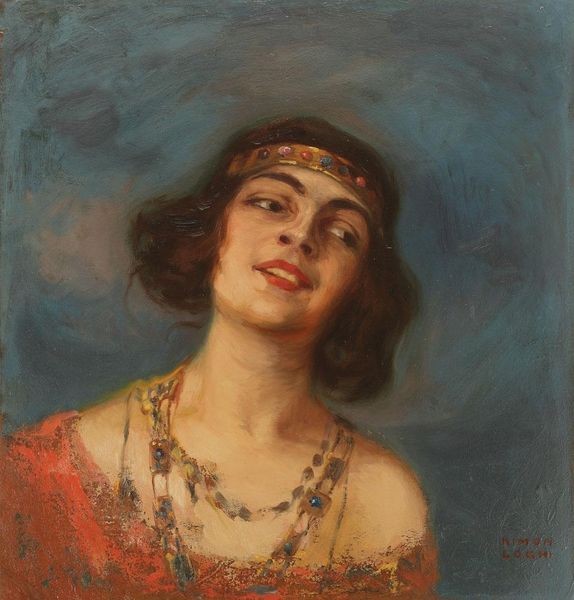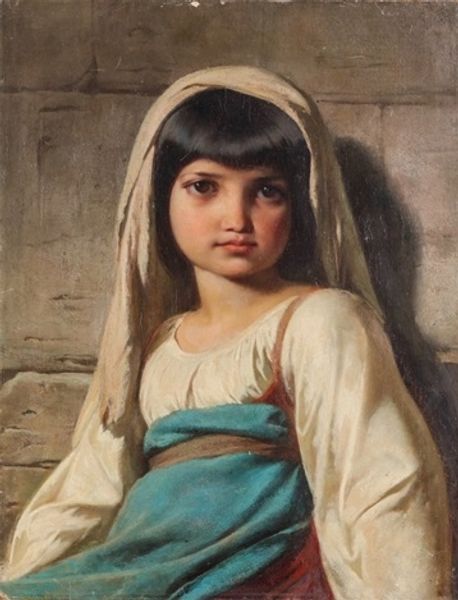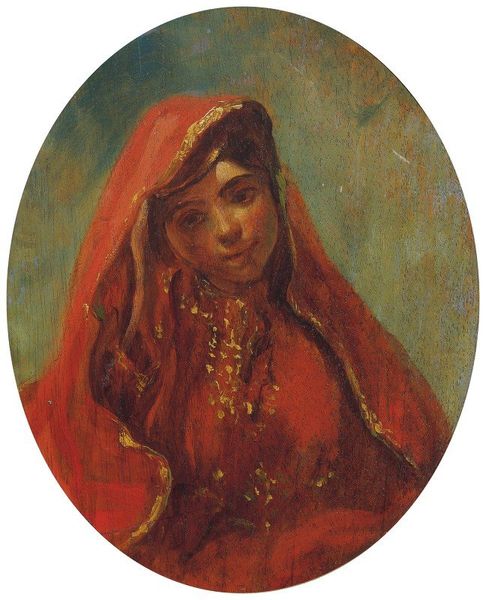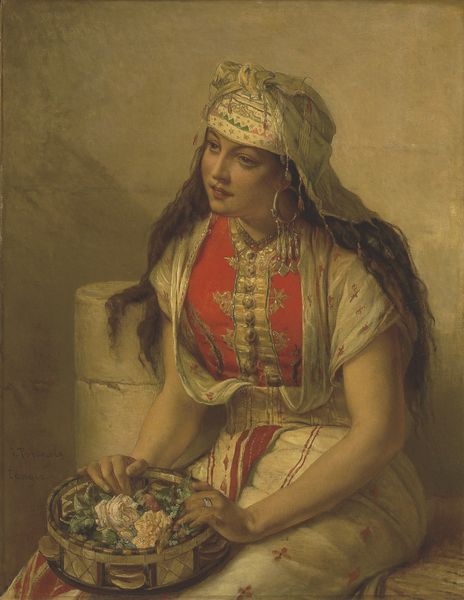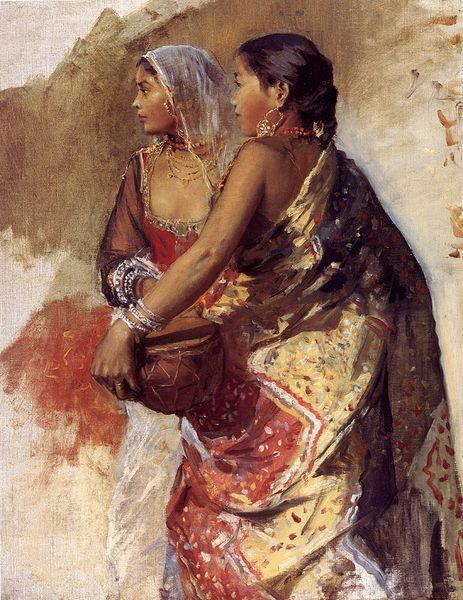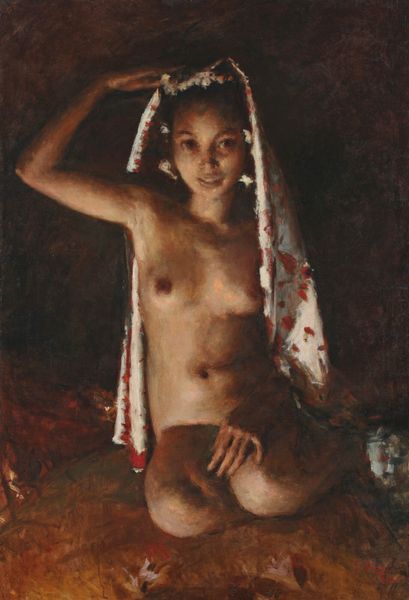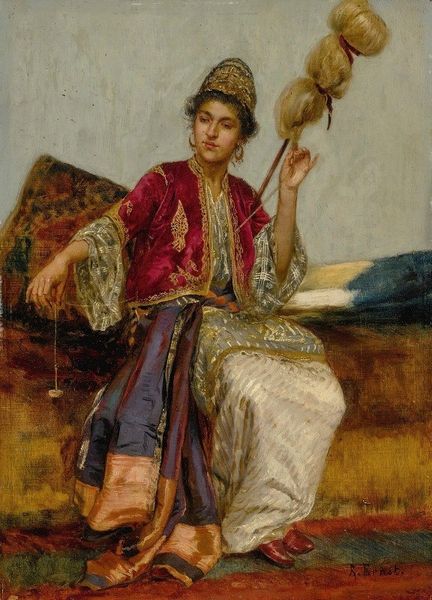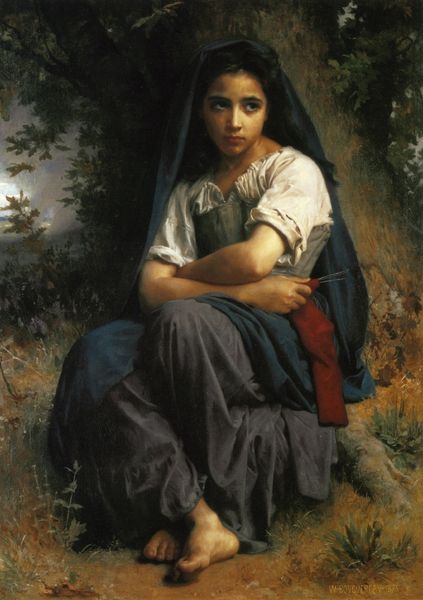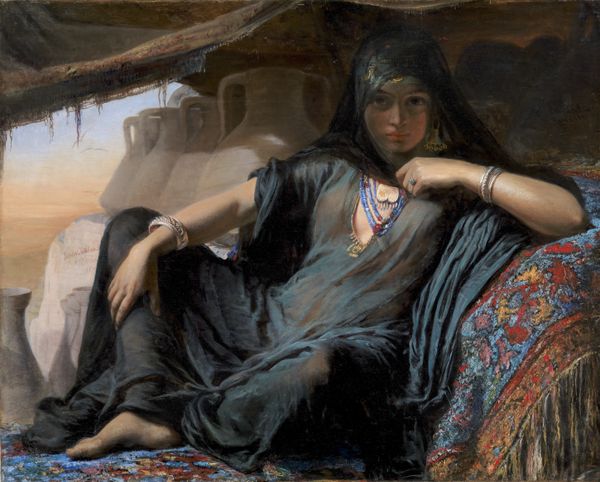
oil-paint
#
portrait
#
oil-paint
#
figuration
#
oil painting
#
romanticism
#
orientalism
#
genre-painting
#
nude
#
realism
Copyright: Public domain
Curator: Jean-François Portaels's oil painting, "Portrait of a Young Arabic Girl," presents us with a study of a young woman. Portaels, active primarily in the 19th century, often explored themes associated with Orientalism. Editor: It strikes me first as an arrangement in color. The way the teal of her draped fabric pops against the ochre background. And that vivid red headband, almost echoing the line of her eyebrows… very deliberate. Curator: Indeed. Portaels, as many of his contemporaries did, used these exoticized subjects to explore themes of sensuality and the "Orient" as imagined by European audiences. The girl's bare chest, though likely within a context specific to its locale, catered to certain European expectations and desires. Editor: But consider how her gaze is averted, downcast. It's a masterful use of composition to create an ambiguous psychological space. We see the craftsmanship of the basket she's holding, the details of her jewelry, yet it's her inward focus that truly commands our attention. The weave, the bead, are only superficial elements of visual delight. Curator: The pose she strikes is of course not spontaneous, and invites deeper questions about how such images circulated and functioned within colonial structures and served certain public functions in representing colonial subjecthood. The very act of portraying a young woman in this way involves complex power dynamics and raises questions about exploitation. Editor: But also look at the light, and the texture of the brushwork rendering the girl's skin so realistically. Consider the artist's formal training and academic skill on display here – in the modeling of the forms, and in the play between shadow and highlights, which serve not merely to exoticize her, but almost certainly to also express his idea of inner thought, of feeling. The surface might project sensuality, but the subject also conveys inner thought, inner depths. Curator: So the visual power of an artwork could then become inseparable from the socio-political history that contextualized its creation and reception. Ultimately, such art provides a record and opportunity to critique and reflect upon such narratives, their enduring power, and changing influence on current values. Editor: Ultimately, this portrait draws me into an undeniable relationship with line, and hue. In her pose I'm also prompted to ponder questions of visibility, concealment, and artifice. It remains quite the composition— provocative on both artistic and societal levels.
Comments
No comments
Be the first to comment and join the conversation on the ultimate creative platform.
